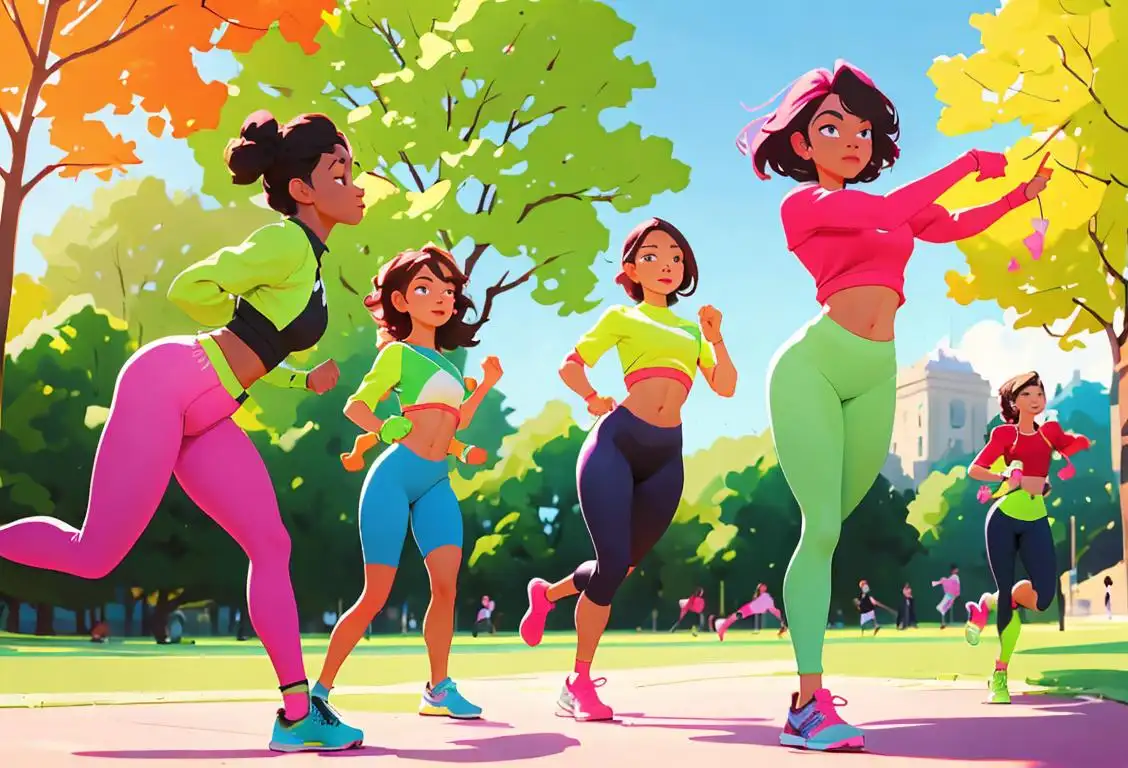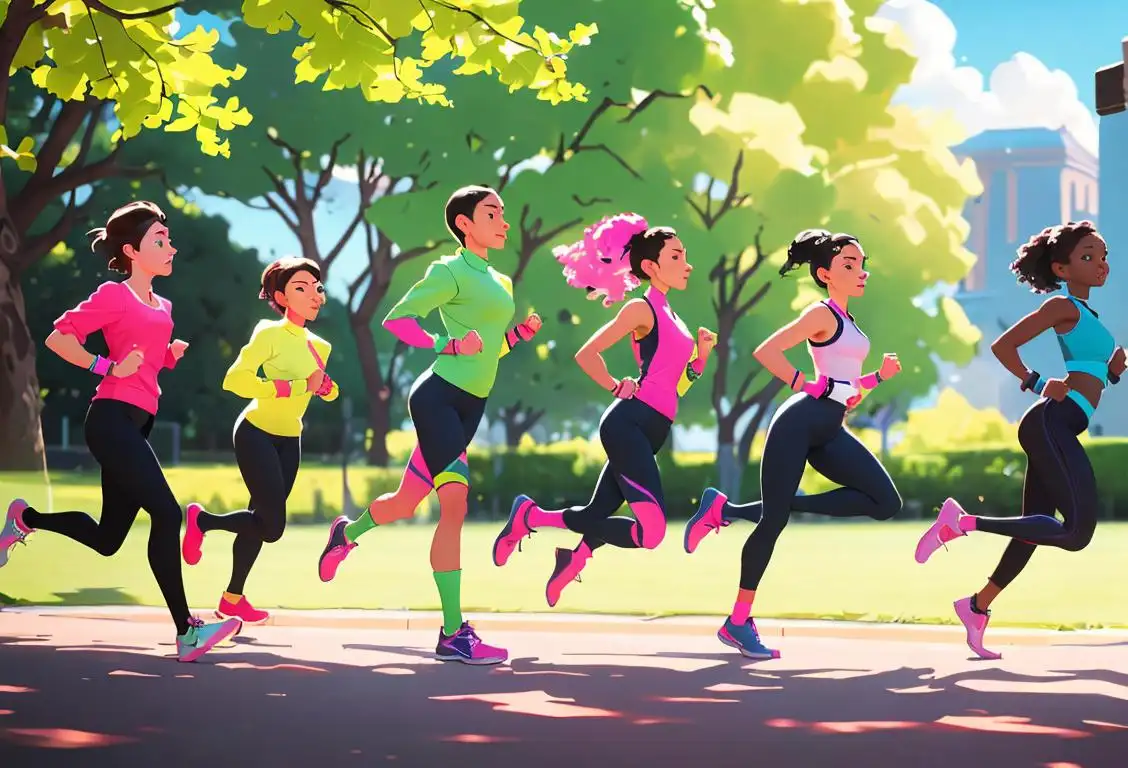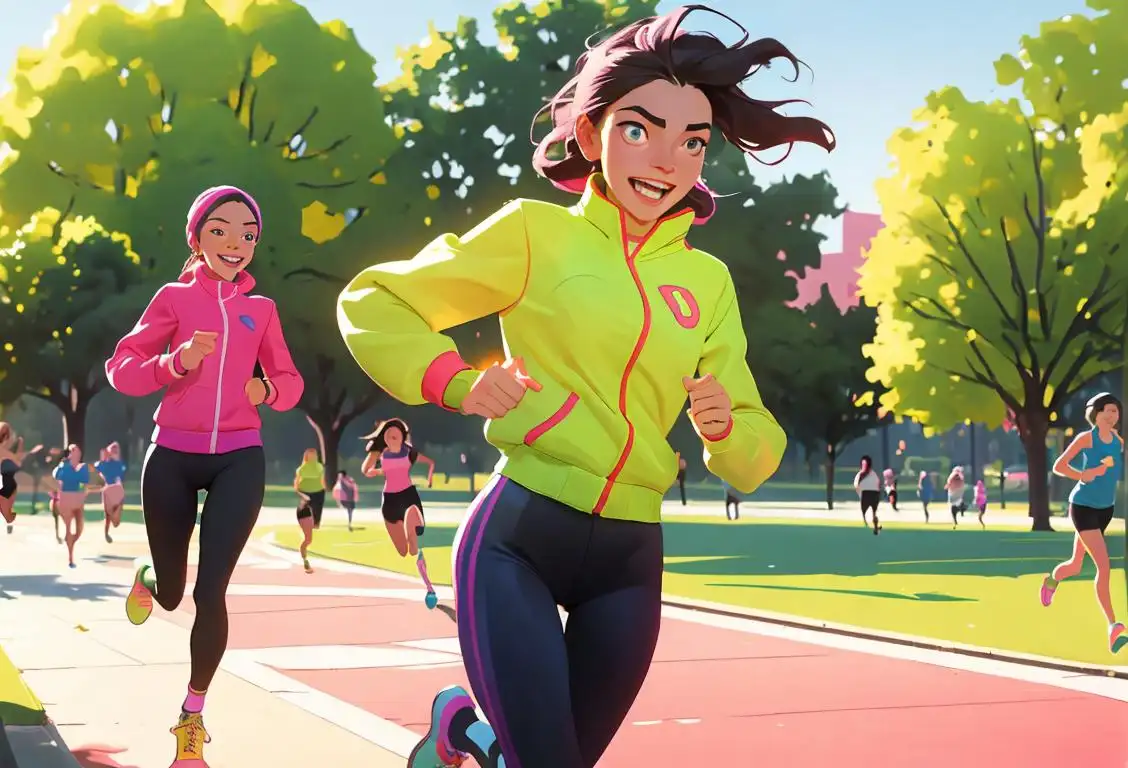National Fitness Day

Hello fitness enthusiasts and casual gym-goers alike! It's time to slip on your best activewear, tie up those laces tight, because we're here to talk about the exhilarating National Fitness Day. This jubilant celebration of getting up and moving may be the perfect antidote to that office chair slump you've been working on - no judgement there!
When is Fitness Day?
It's national fitness day on the 26th September.
Brief History of National Fitness Day
Imagine a day where everyone, everywhere, decided to do some form of exercise. Quite the spirited scene, isn't it? Well, that's what happened in 2018 when the internet got 'pumped up' about National Fitness Day with a whopping 19443 online mentions. The peak of these mentions was detected on September 26, 2018 - looks like burpees and lunges were the hot topic of the day!
The Beautiful Message Behind It
The aim of this day is simple yet important: to highlight the role physical activity plays in helping us lead healthier, happier lives. It's not just about building those biceps or achieving that coveted summer beach bod, but about nurturing a positive relationship with our bodies while having fun too! (Fun?! While exercising?! Yes, you read that right!).
How to Celebrate?
The real beauty of National Fitness Day, as you may have guessed, is that it can be celebrated in umpteen ways. You could challenge yourself to a new workout, enjoy a long walk in the park, or simply bust out your best moves on the living room floor. As long as you're moving, you're celebrating! So dust off that exercise equipment or charge up the old Fitbit; It's time to get moving!
History behind the term 'Fitness'
1950
Rise of Physical Culture Movement
In the early 1950s, a new fitness movement called Physical Culture gained popularity. Spearheaded by pioneers like Bernarr Macfadden and Charles Atlas, this movement emphasized exercise, healthy eating, and body conditioning. Physical Culture magazines and exercise programs became widely accessible, promoting the idea of physical fitness for better health and improved appearance.
1960
Introduction of the Term 'Fitness'
In the 1960s, the term 'fitness' began to gain prominence in response to the growing interest in physical well-being. The concept of fitness expanded beyond just physical appearance and encompassed overall health, strength, endurance, and flexibility. Fitness centers and gyms started to use the term to attract individuals looking to improve their physical fitness levels.
1980
Aerobics Craze and Popularization of Fitness
The 1980s witnessed the explosion of the aerobics craze, fueled by workout videos and fitness icons like Jane Fonda. Aerobics became a widely popular form of exercise and further contributed to the increasing popularity of the term 'fitness.' The emphasis on cardiovascular health and aerobic exercises brought the term into mainstream culture, as millions of people embraced exercise as a means to improve their fitness levels.
1990
Fitness Industry Boom
During the 1990s, the fitness industry experienced rapid growth and diversification. Gyms, health clubs, and fitness centers multiplied, offering a wide range of exercise options and specialized training programs. This period witnessed a surge in the number of personal trainers, fitness certifications, and scientific studies on exercise physiology. The term 'fitness' became a central concept in marketing campaigns and health-focused discussions.
2000
Digital Fitness Revolution
With the advent of the internet and technology, fitness took a digital turn in the 2000s. Online fitness communities, workout apps, fitness trackers, and smart home workout equipment gained popularity. People could now access workout routines, track progress, and participate in virtual fitness challenges from the comfort of their homes. The term 'fitness' expanded its reach to not only physical well-being but also encompassed digital connectivity and convenience.
Did you know?
Did you know that according to World Health Organization, adults should do at least 150 minutes of moderate-intensity physical activity throughout the week? Ease yourself into a routine starting on National Fitness Day!Tagged
awareness fun celebration sports health fitnessFirst identified
2nd April 2015Most mentioned on
26th September 2018Total mentions
19443Other days
Fitness Day
Health And Fitness Day
Running Day
Lash Day
Yoga Day
Bike To Work Day
Spinach Day
Gymnastics Day
Donor Day
Beastmode Day








